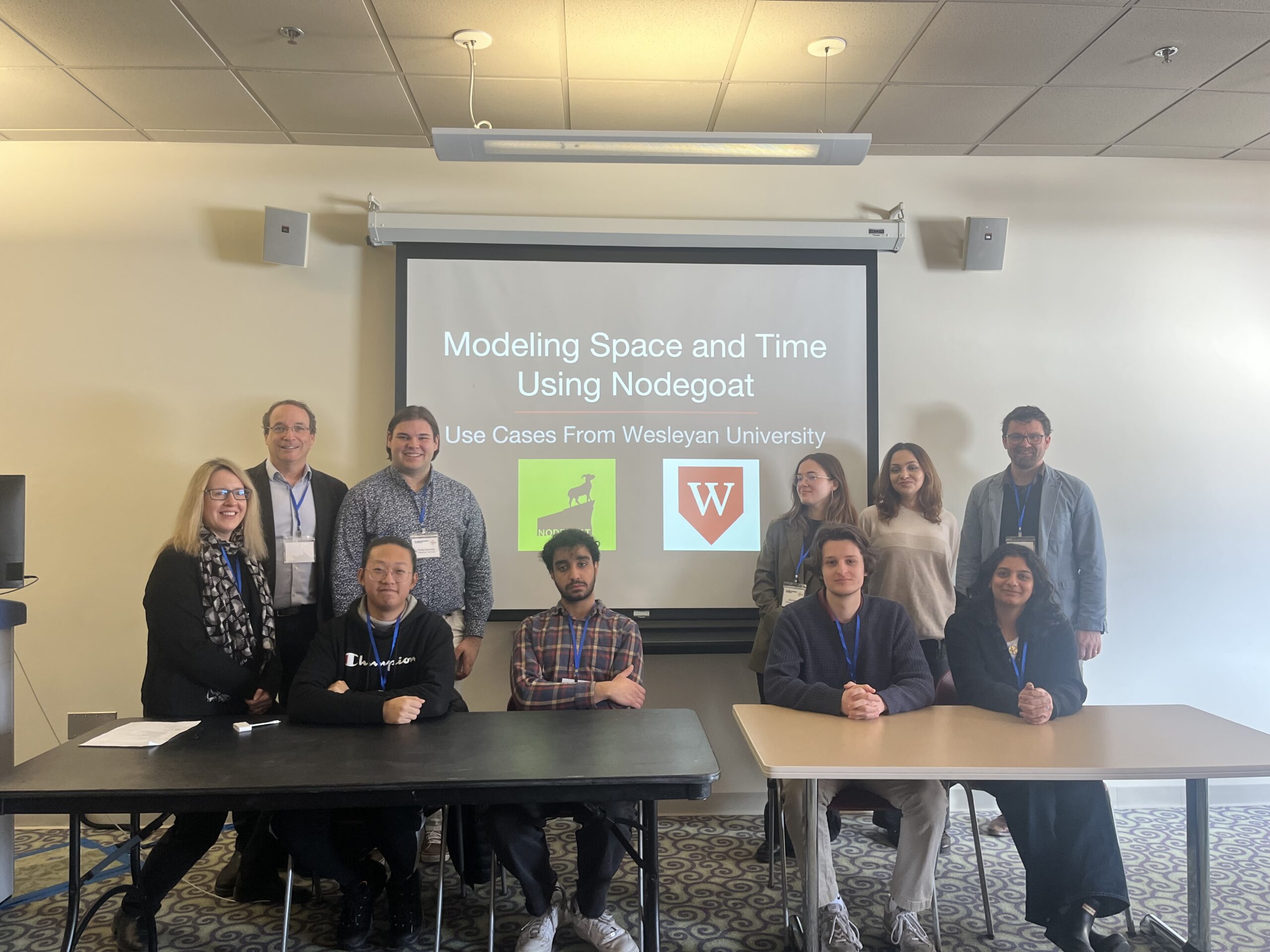By Vasilia Yordanova
On February 22, students and professors collaborating on the CDER project and other digital humanities research projects at Wesleyan presented their work at the 2025 Connecticut Digital Humanities Conference at Central Connecticut State University. Will Markowitz, Arushi Khare, Akram Elkouraichi, and Professor Torgerson spoke about their progress on the CDER project, beginning by explaining the goal of accumulating data from across many sources into one digital platform to allow for easier access to relationships between data and to facilitate interaction between academic disciplines. Students’ roles in the projec t are researching sources and incorporating them in the platform, and compiling data in the platform, with Professor Torgerson’s guidance.
t are researching sources and incorporating them in the platform, and compiling data in the platform, with Professor Torgerson’s guidance.
Will explained the NodeGoat platform, which the CDER project uses to accumulate and centralize data in an accessible digital format. Then, Akram discussed linked data and his work on modeling the Istanbul walls. Will spoke about relational data and examining relationships between different kinds of data, including geographical relationships (as the project is space-based). He demonstrated how these relationships appear visually in NodeGoat. Arushi described the work of linking seals from the Dumbarton Oaks collection in Georgetown to an open database of people living in Constantinople and to official buildings where offices would have been stationed. The goal is to link information extracted from sources back to those sources in NodeGoat.
Arla Hoxha and Zaray Dewan spoke about their work on the Chronicles project, and students and professors working on the Life of Milarepa and Chinese language theaters in North America also presented on their recent work at the conference.

